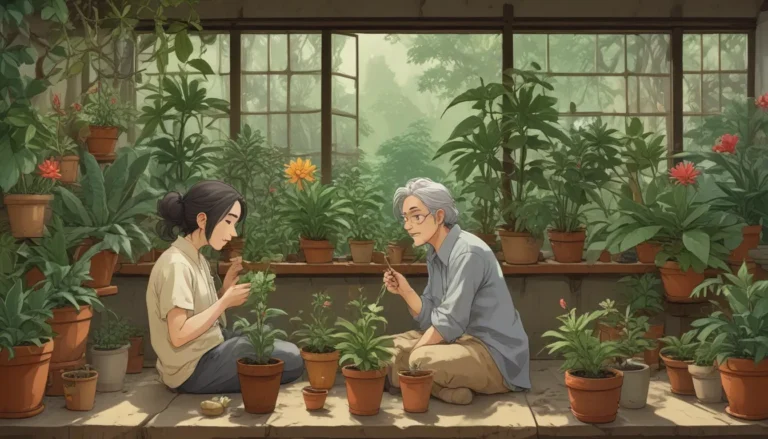The Ultimate Guide to Understanding Turnip Cracks and Rot

Have you ever experienced the disappointment of pulling out your turnip plants eagerly, only to find cracked or rotting roots underneath? It’s disheartening, to say the least. You envision the delicious roasted vegetables you were about to prepare, only to have your hopes dashed by a less than perfect harvest.
But fear not, for we are here to share valuable information on why your turnips can crack or rot, and how you can prevent such issues from plaguing your garden. In this comprehensive guide, we will delve into various reasons behind turnip cracks and rot, ranging from diseases to environmental factors and improper gardening practices.
So, let’s get started on what you can expect to learn:
A Brief Introduction to Turnips
Before we dive into the nitty-gritty details, it’s essential to have a foundational understanding of turnips. These cool-weather root crops, scientifically known as Brassica rapa subsp. rapa, thrive in USDA Hardiness Zones 2-9. They require well-draining, nutrient-rich soil, consistent moisture, and good air circulation. To avoid issues like cracking or rotting, it’s crucial to practice responsible gardening by testing soil quality, maintaining hydration levels, and rotating crops.
Now, let’s explore the possible causes behind turnip cracks and rot:
Diseases
Turnips can fall victim to various diseases, resulting in cracked or rotting roots. Whether fungal, bacterial, or caused by water molds, prevention is key to safeguarding your crops.
Anthracnose
Anthracnose, caused by the fungus Colletotrichum higginsianum, manifests as circular lesions on foliage and roots. It thrives in warm, moist conditions and can be spread through infected seed. To prevent anthracnose, ensure proper spacing, trim leaves for air circulation, and use copper fungicides if necessary.
Bacterial Soft Rot
Caused by Pectobacterium carotovorum bacteria, soft rot leads to mushy, water-soaked spots on turnips. Preventive measures include maintaining air circulation, irrigating at the base, and cleaning tools with a bleach solution. Infected plants should be destroyed to prevent recurrence.
Black Rot
Black rot, resulting from Xanthomonas campestris bacteria, can cause turnips to rot underground. The bacteria are long-lasting and can survive on plant debris. To curb black rot, identify, prevent, and treat the disease promptly.
Downy Mildew
Downy mildew, caused by Peronspora parastica, thrives in cool, moist conditions. Symptoms include yellow spots, white moldy mats, and root discoloration. Preventive measures include maintaining a weed-free garden and using fungicidal sprays.
Physiological Ailments and Other Issues
Apart from diseases, turnip cracks and rot can stem from physiological ailments and environmental factors.
Brown Heart/Hollow Heart
A boron deficiency, resulting from imbalanced soil conditions, may lead to internal cracking and rotting of turnips. Test soil quality, amend with Borax if deficient, and maintain nutrient balance to prevent hollow heart.
Excessive Heat
Turnips are intolerant to excessive heat, leading to woody roots and cracking. Avoid high temperatures and provide adequate moisture and shade to prevent cracking.
Water Problems
Uneven watering, particularly after dry spells, can cause turnips to crack due to sudden uptake of water. Maintain consistent moisture levels to prevent cracking.
The Silver Lining
Despite cracked or rotting roots, not all hope is lost. Use your judgment to salvage edible parts of turnips and discard any mold-infested portions. Gardening challenges are part of the journey, so don’t be discouraged by setbacks.
In conclusion, turnip cracks and rot can be prevented with proactive measures such as disease control, maintaining optimal growing conditions, and following good gardening practices. Remember, challenges are part of the gardening experience, and overcoming them only makes you a better gardener.
Share your turnip stories and questions in the comments below. We’d love to hear about your experiences and what solutions worked for you.
For more insights on turnip cultivation, check out additional guides on pest management, preventing bolting, leaf spot identification, and growing turnip greens at home.
Remember, a well-tended garden leads to a bountiful harvest of picture-perfect turnips ready to enjoy in your favorite recipes!
By incorporating new sections, examples, and valuable content, this enhanced guide provides a comprehensive understanding of turnip cracks and rot, empowering readers with actionable insights to optimize their gardening practices.





